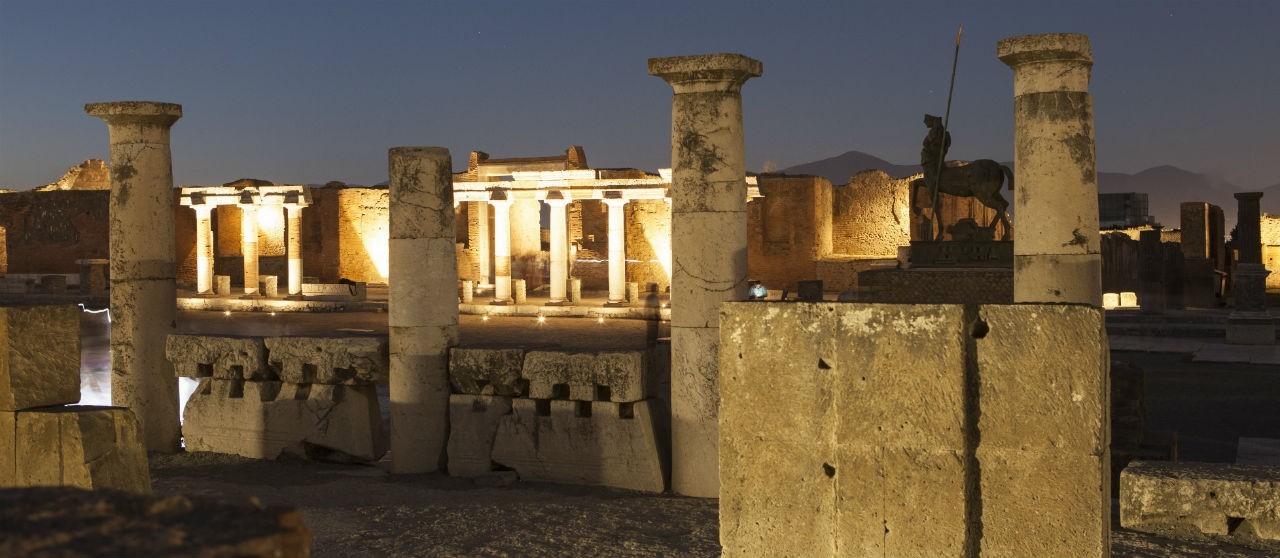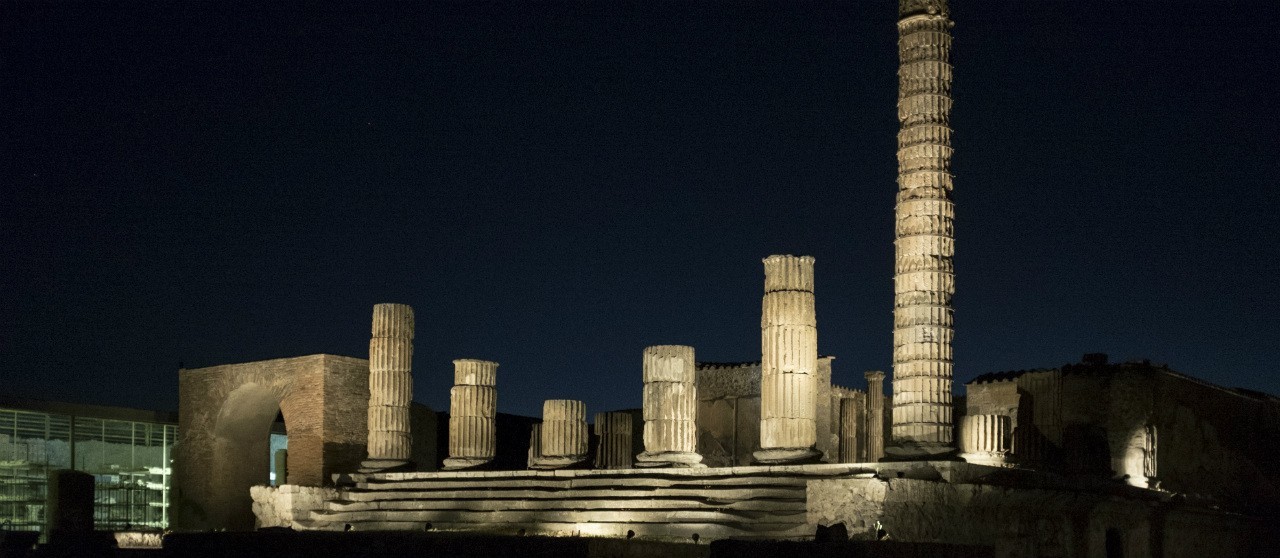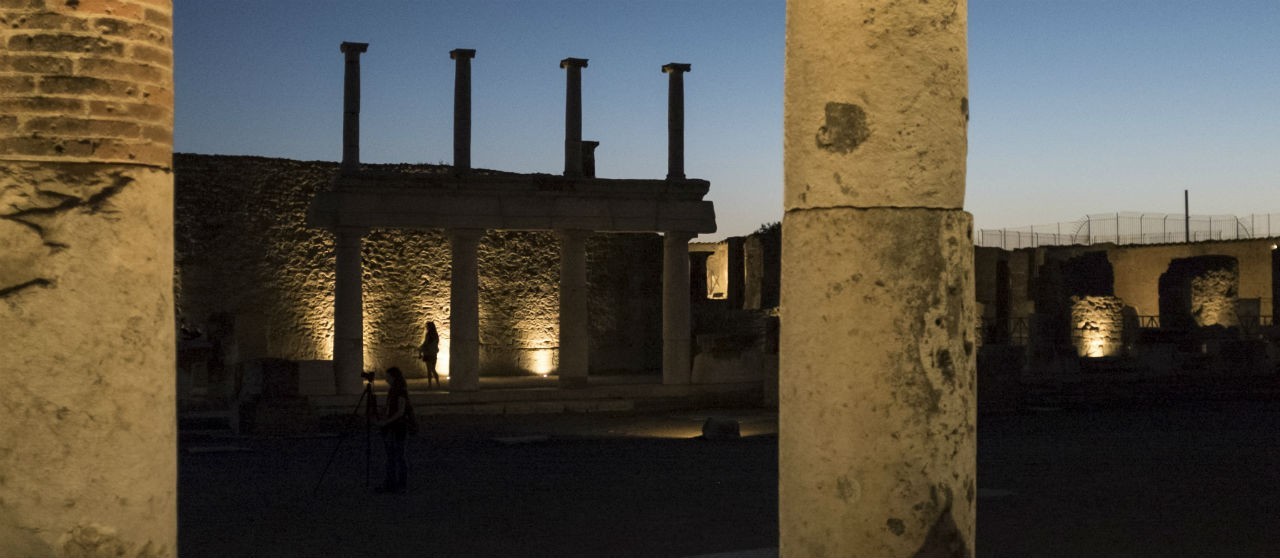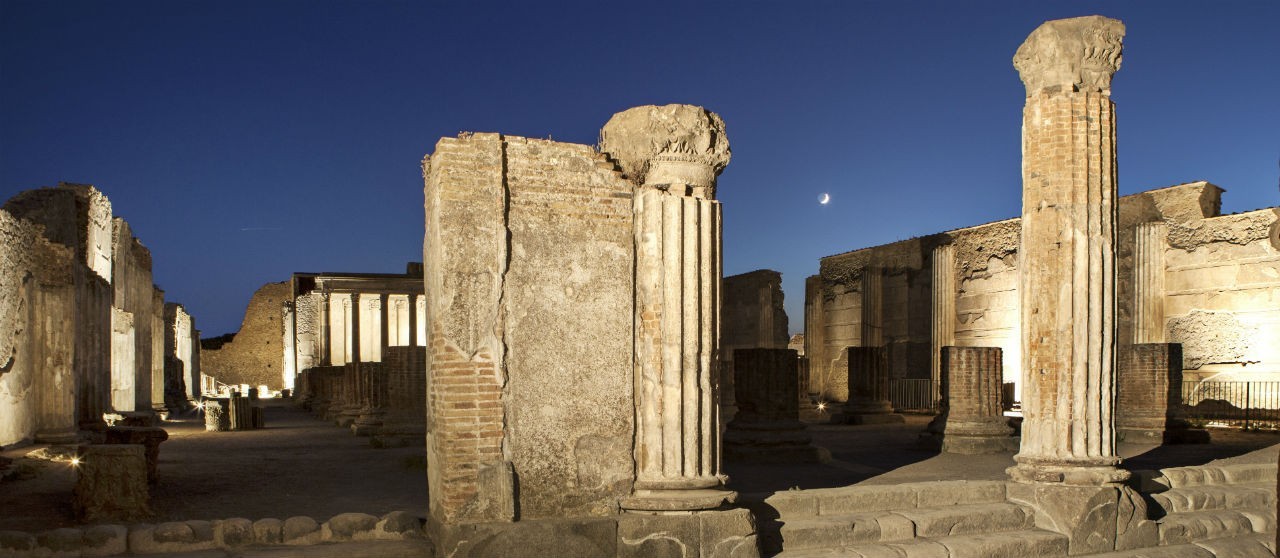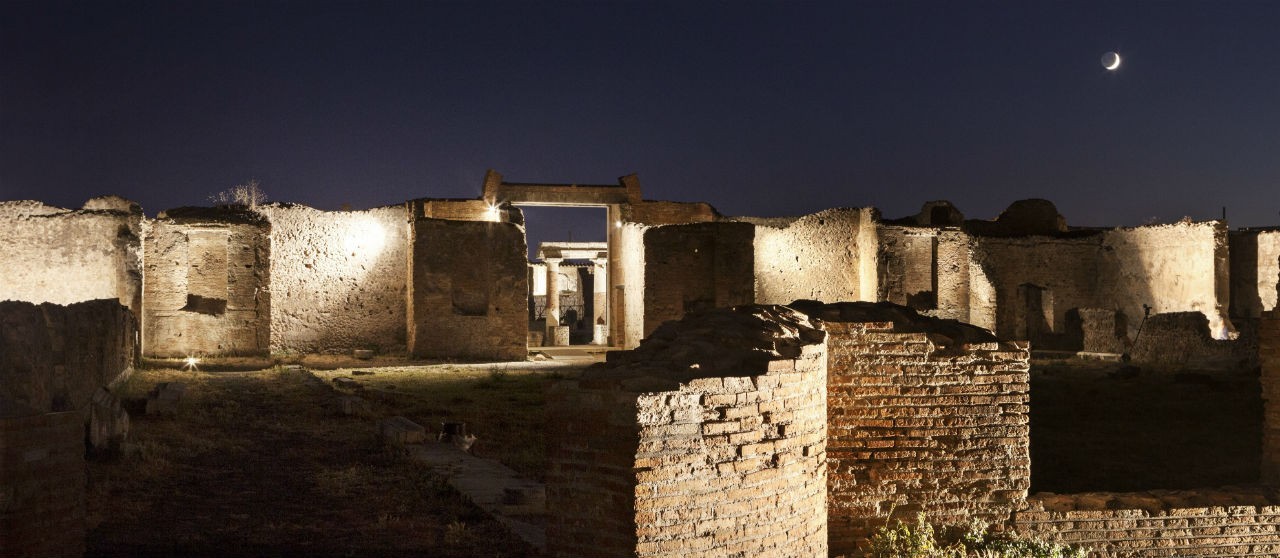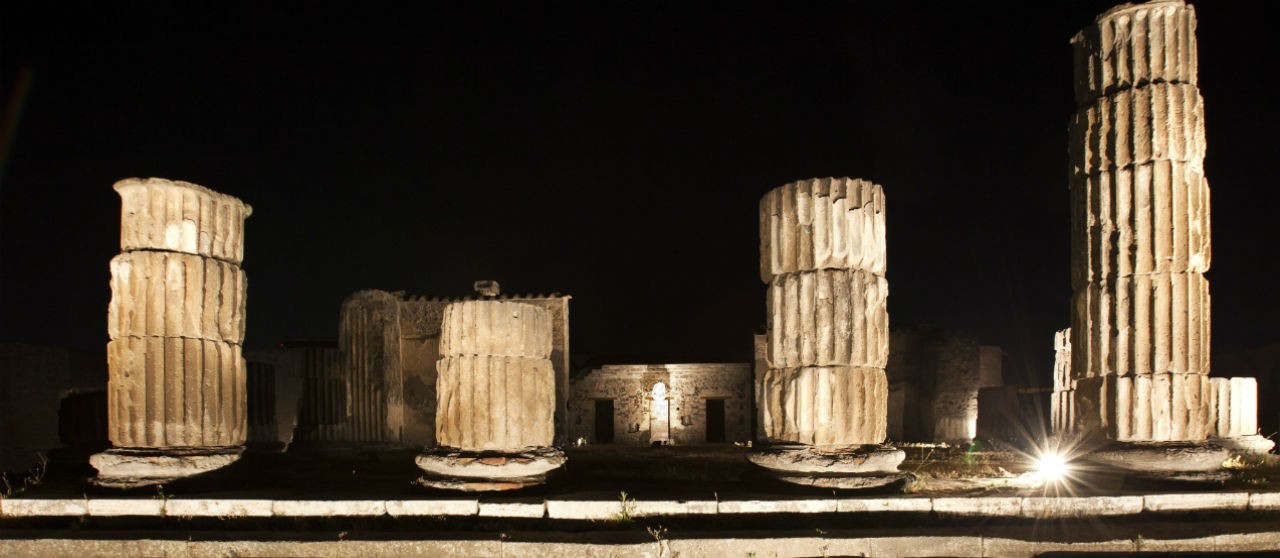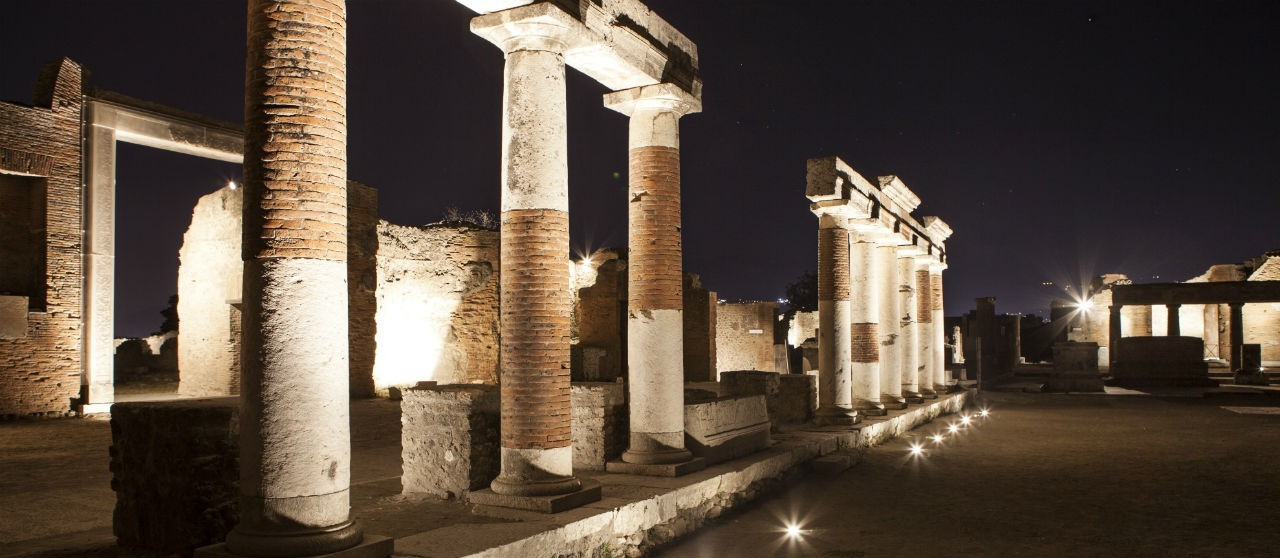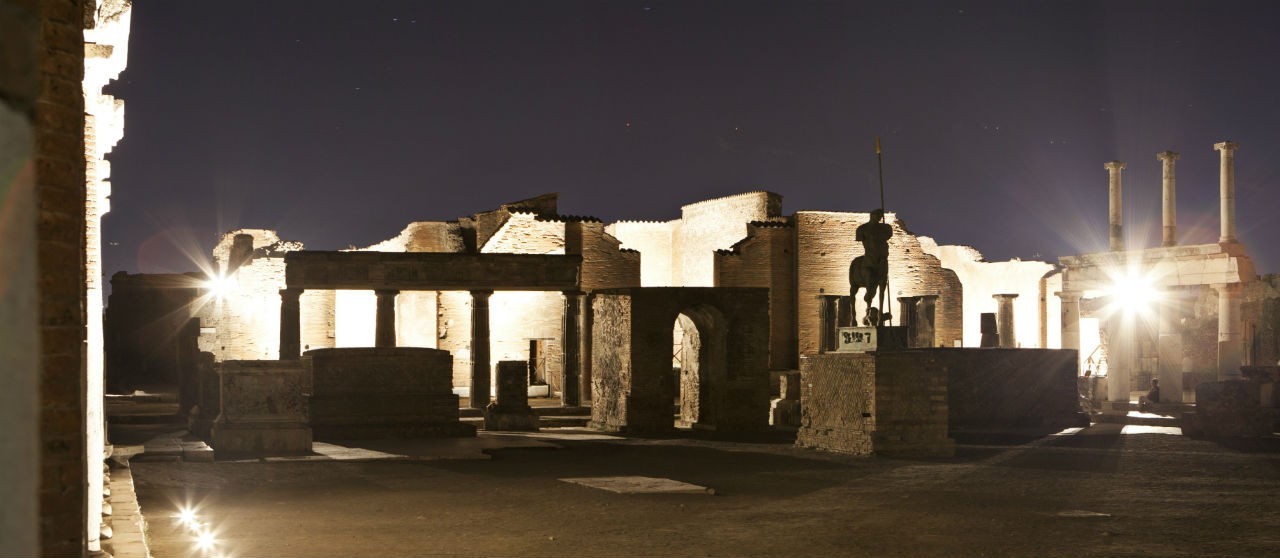“Pompeii’s new lighting system is another important step in the revival of an archaeological site, which is unique in the world. Thanks to the striking interplay of lights, the lines and shapes of the ruins now shine with renewed beauty”
On the occasion of the evening openings until 24 August, on Tuesdays and Thursdays, it will be possible to immerse oneself in a walk in the Pompeian night, starting from Porta Marina Maggiore, then continuing, guided by the interplay of the lights, through the shops of Via Marina, the Temple of Apollo, the Forum, the Temple of Vespasian, the Macellum and public buildings, to the Basilica. It is a path accompanied by soundscapes and voices that rise from the different spaces that will carry visitors into a timeless dream, while affording a view of life in ancient Pompeii.
To end the journey, the impressive images of the video created by the specialists of the Information Technologies Lab (Italy), the Institute for Archaeological and Monumental Assets at the CNR, surround the viewer in a vortex of sounds and lights that narrate the charm of the Pompeian villas, the red of the paintings, the relationship between the city and its inhabitants, the nature, water and the environment.
Smart lights for Pompeii
Thanks to a consolidated know-how in artistic lighting, we have transformed the innovation of LED and smart technologies developed for the lighting systems into an instrument to enhance the artistic and cultural heritage.
“The project in Pompeii is part of the experience gained over 17 years of activity, through more than a thousand interventions on monuments and museums in Italy and abroad,” explained Emanuele Sguazzi, Head of Large Customers Solutions and Public Administrations, Enel Italy Market.
In Pompeii our company implemented a broad relamping effort to overhaul the system installed by Enel in the year 2000, replacing all the old halogen sources with LED devices, reducing consumption by 60% (from 55 Kw to 11 KW), and introducing, thanks also to the modernization of a part of the power lines of the area, an innovative automation system that allows controlling the entire system remotely and adjusting the light intensity of each of the 432 light points of the itinerary, while integrating seamlessly with sounds, noises and videos.
The itinerary was created by a team of about ten people, including technicians, engineers and architects. All belonging to Enel. “We did everything in house, because we have the skills and resources to do it,” stressed Sguazzi.
Technologies, innovation, and art
The itinerary of lights of “A night in Pompeii” represents a meeting point between art and technology, two seemingly distant, but close dimensions: the word “technique” derives from the ancient Greek word τέχνη (téchne), which means the art and ingenuity of knowing how to do.
The Romans who built ancient Pompeii were incredible engineers and architects, and their innovations in design and building techniques have crossed the millennia. The Archaeological Park, with the excavations of the Roman city, bears witness to this and, also thanks to the contribution of our Group, continues to tell its story.
“With this intervention, we have joined together technology, sustainability and energy efficiency. I believe that this itinerary of sounds and lights will spread around the world: a postcard that shows a beautiful and contemporary face of Italy, combining development and tradition”
“Innovation and technology play a crucial role in the protection of cultural heritage,” stressed Minister Franceschini. “In Italy, we have achieved absolute levels of excellence in this area: from applications for smartphones, through new restoration techniques, to the reading of manuscripts and incunabula. A heritage of scientific research and knowledge that is huge and in which Italy is at the forefront.”
The skills and technologies that we have brought to Pompeii will help to develop this expertise to leverage a priceless heritage and bring it back to life, even at night, when a more sustainable light will hand over the pomp of a past that resounds in the walls, columns, in the streets of the archaeological park and in the dreams of those who will live and look at it with their own eyes to the future.


